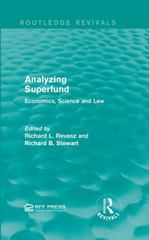Answered step by step
Verified Expert Solution
Question
1 Approved Answer
Now suppose that the pipeline has been built and that we are now concerned about climate change. Specifically, each barrel of oil generates 0.43 metric
Now suppose that the pipeline has been built and that we are now concerned about climate change. Specifically, each barrel of oil generates 0.43 metric tons of carbon dioxide, and carbon dioxide contributes to climate change, creating environmental externalities of $43 per metric ton (or about $18.50 per barrel). Continue to assume all of the hypotheses from the previous question (that the Canadian firm can extract 4 million barrels of oil per year for zero cost; that the oil can either be sold Canadians for $30/barrel or transported through the pipeline and sold to Americans for $45/barrel; and that the pipeline can transport 1 million barrels of oil each year). a) If we can tax the Canadian firm per barrel of oil extracted, and our objective is to maximize the Canadian firm's profits minus environmental damage, what should the tax be
Step by Step Solution
There are 3 Steps involved in it
Step: 1

Get Instant Access to Expert-Tailored Solutions
See step-by-step solutions with expert insights and AI powered tools for academic success
Step: 2

Step: 3

Ace Your Homework with AI
Get the answers you need in no time with our AI-driven, step-by-step assistance
Get Started


